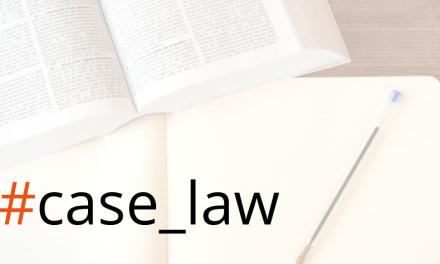
Insolvent groups of companies – subject not recognized

My first entry is devoted to groups of companies. They are of great interest to the lawyer, especially in the context of insolvency, restructuring and bankruptcy. Everything can be said, but it is certainly not the case that this area is over-regulated.
No regulation on the insolvency of related companies
We do not have regulations on the insolvency of related companies, and more generally on the attempt to assign to one company the premises for declaring the bankruptcy of another company from the same group. We do not have direct regulations allowing for the merger of restructuring and bankruptcy cases concerning various companies for joint consideration. Regulations of common economic interest for a group of companies are not in vain to be sought. Consequently, no body of procedure, including a trustee, manager, supervisor or Commissioner, can take account of any interest other than that of the company concerned.
Interest of groups of companies
I am aware that the normative concept of the interest of groups of companies is also not available in commercial company law, and even the interest of the company itself is not fully recognized (the interest of the company itself or the interest of the owners? and if so what?). In bankruptcy and restructuring law, the interests of the bankrupt and the debtor are generally intuitively identified with those of creditors. But again this raises a lot of questions: is the interest of groups of companies in bankruptcy and restructuring homogeneous? Are creditors concerned only, or perhaps also the interest of the debtor and its owners in the restructuring of a company that is open to an entity at risk of insolvency? Should the interests of creditors in rem be better protected than those of other creditors?
Doubts can be multiplied. The answers of the law do not offer us any answers. Fortunately, however, residual regulations do exist.
The possibility of combining cases to be examined jointly under bankruptcy and restructuring law
Both Article 190 of the Restructuring Law Act (p.r.o.) and Article 215 of the Insolvency Law Act (p.o.) extend the scope of merger cases. Currently, all cases are allowed to merge if the court deems it justified, in particular with regard to related parties and spouses. This merger takes place at a stage after bankruptcy has been declared or restructuring proceedings have been opened. Joining cases at an earlier stage within bankruptcy proceedings or opening of proceedings is possible only on the basis of properly applied provisions of the Code of Civil Procedure (Article 219 of the Code of Civil Procedure).
Further regulation of insolvency and restructuring law in the field of affiliated companies
The provisions of p.r.o. and p.o. regarding related companies also concern: the prohibition on exercising voting rights at the meeting of creditors in matters concerning the composition by related entities (Article 116, paragraph 2, p.r.o.), the lack of influence of related entities on the appointment of a manager or a supervisor (Articles 38, paragraph 2 and 51, paragraph 2, p.r.o.) and its amendment (Article 28, paragraph 1, point 4, p.r.o.).), the lack of the right to request the establishment of a creditors’ council and to appoint and change members of the creditors’ council (Article 121(2), Article 123 and Article 126 p.r.o.), the lack of the right to submit composition proposals (Article 155(2) p.r.o.), public aid for restructuring (Article 141(3) p.r.o.) and the ineffectiveness of legal transactions carried out with related entities in the run-up to bankruptcy (Article 128 p.o.).
As of 1 January 2016, the legal position of the shareholder financing the company under the loan agreement changed. Until the end of 2015, in accordance with Article 14 §2 of the Polish Commercial Companies Code, a shareholder’s or partner’s liability for a loan granted to a capital company shall be deemed its contribution to the company in the event of its bankruptcy within two years of the date of conclusion of the loan agreement. Currently, such a claim is classified to the last, fourth category of satisfaction from the funds of the bankruptcy estate (Article 342(1)(4) p.o.).
These findings lead to the conclusion that the legislator:
- recognises the complex problem of financial settlements between related companies. However, it does so in a very limited way, residually and as it were when other problems are solved (holding financing and insolvency – see Article 11(4) p.o., and satisfying the financing entity from the group, and this only in terms of the parent company as the financing company);
- recognises the problem of intra-group transactions made to the detriment of creditors in the run-up to bankruptcy. Since 1.1.2016, the legislator has made the standards of operations with business justification more flexible (only such operations which do not lead to harm to creditors may be ineffective, and the burden of proving this circumstance rests with the entity performing operations with the debtor, cf. Article 128, section 1, sentence 1, p.o.);
- recognizes the problem of the influence of the related entity on the debtor in the restructuring through the selection of extra-judicial bodies and the representation of creditors, as well as the voting on the composition, and excludes its voting right.
Conclusions
It is therefore difficult to draw conclusions on how the legislator wanted to regulate the status of groups of companies in bankruptcy and restructuring. I put forward a thesis that within the framework of already opened restructuring and bankruptcy proceedings, the legislator allows joint conducting of proceedings concerning companies from the same capital group by introducing into the system art. 215 p.o. and art. 190 p.r.o., but it does not specify any substantive guidelines for solving problems on the level of relations between these companies.
We will shortly be developing this topic. To be heard!













